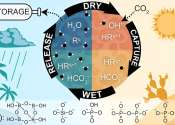Predicting pollution with internet of things
Recent research suggests that heart attacks, cerebral stroke, and asthma attacks all rise with increasing air pollution in our cities, and of course the wider problems for the environment and human, animal, and plant life ...
Oct 24, 2019
0
14









